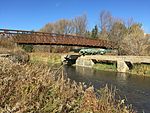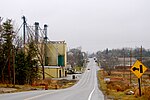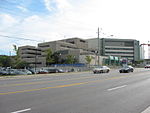Sharon, Ontario

Sharon (formerly Hope) is a former village now incorporated into the municipality of the Town of East Gwillimbury, Ontario, Canada, formerly the Township of East Gwillimbury. The municipal offices of the town are in Sharon. The community's most historic building is the Sharon Temple, once the meeting house of the Children of Peace (or Davidites). It is part of the musical, political, religious and architectural heritage of Ontario and is now a museum and National Historic Site of Canada. The museum hosts a number of concerts and educational programs, and has hosted the Words Alive Literary Festival since 2007. In the mid to late 1980s, housing developments were built in the area around Sharon. Further developments have continued slowly around Sharon since 2002.
Excerpt from the Wikipedia article Sharon, Ontario (License: CC BY-SA 3.0, Authors, Images).Sharon, Ontario
Veronica Crescent, East Gwillimbury
Geographical coordinates (GPS) Address Nearby Places Show on map
Geographical coordinates (GPS)
| Latitude | Longitude |
|---|---|
| N 44.106111111111 ° | E -79.434444444444 ° |
Address
Veronica Crescent 42
L9N 0P6 East Gwillimbury
Ontario, Canada
Open on Google Maps





